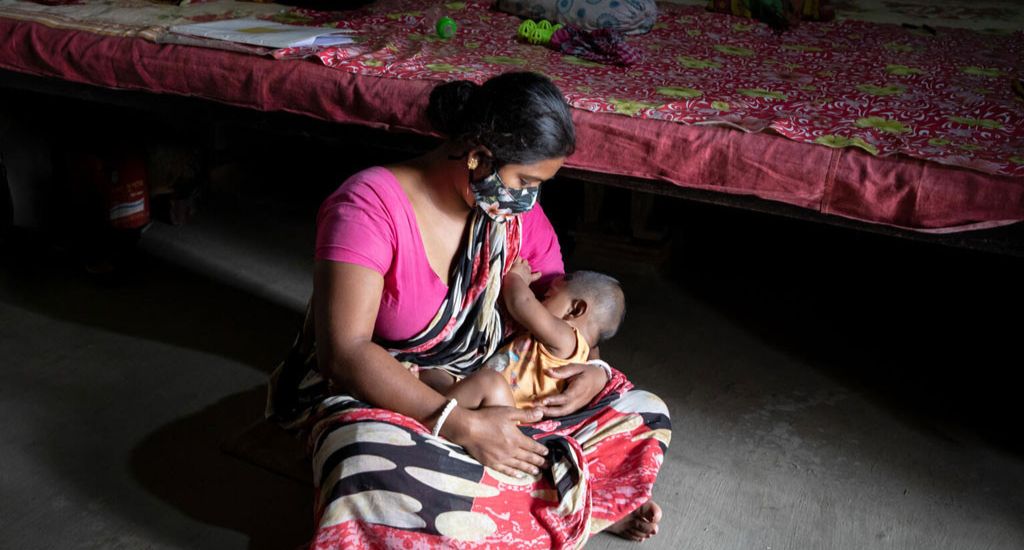
Why the golden hour of breastfeeding is important
Breastfeeding may be a culturally encouraged practice in India, but feeding breast milk to the newborn within the first hour of birth needs to gain more acceptance in many parts of the country.

Breastfeeding may be a culturally encouraged practice in India, but feeding breast milk to the newborn within the first hour of birth needs to gain more acceptance in many parts of the country.
Breastfeeding has been an important aspect of Indian culture for centuries and finds mention in the Vedas as well as the Charak Samhita and Sushruta Samhita, the two foundational texts on Ayurveda. While the Atharva Veda describes the breast as a pitcher full of nectar, the Sushruta Samhita says, “Drinking of the milk, whose sap is the sap of immortal life divine, may your baby gain long life, as do the gods by feeding on the beverage of immortality.”
However, despite the recognition since ancient times of the benefits of breastfeeding, concern has been rising in recent years about the changing pattern of the practice. Breastfeeding is almost a universal practice in India, yet large differences have been observed among population groups within the country.
In various parts of India, the first milk, called colostrum, is discarded. This yellow or golden milk produced in the first days after childbirth contains immunity-boosting properties and is an important source of nutrition for the newborn. According to the World Health Organization (WHO), breastfeeding within one hour of birth protects the newborn from acquiring infection and reduces newborn mortality. “It facilitates emotional bonding between the mother and the baby and has a positive impact on the duration of exclusive breastfeeding. When a mother initiates breastfeeding within one hour after birth, production of breast milk is stimulated,” the WHO says.

However, despite communication strategies devised to bring about a behavioural change among communities on the acceptance of breastfeeding during the first golden hour after birth, the results are not very encouraging.
According to the National Family Health Survey (NFHS-5) report, the percentage of children who are breastfed within one hour of birth is very low in Jharkhand (22 percent), followed by Uttar Pradesh (24 percent) and Bihar (31 percent). The only regions where more than two-thirds of babies are breastfed within one hour of birth are Odisha, Kerala, Lakshadweep and Meghalaya.
In some parts of India, the practice of giving pre lacteal feed is still followed, wherein the newborn is given substances other than milk before the initiation of breastfeeding. This is despite the fact that scientific guidelines say that the infant should be exclusively breastfed for the first six months after birth. The NFHS-5 data reveals that this practice is most prevalent in Chandigarh (31 percent) followed by Uttarakhand (30 percent) and Punjab (28 percent).
The report also shows the socioeconomic factors playing a role here. In urban locations, 44 percent of children were recorded as having been breastfed within one hour of birth. More male children are breastfed (42 percent) as compared to female children (41 percent). Education was seen as playing a role too. While 37 percent of the mothers who didn’t go to school breastfed their babies, the number was highest among those who had studied up to class 10 or 11, reaching 45 percent. Analysis of data according to communities showed that those belonging to Other Backward Classes (39 percent) had the least early initiation of breastfeeding, while the corresponding figure was 46 percent for the Scheduled Tribes.
According to the report, 42 percent of babies who were delivered by health personnel got breast milk during the golden hour, as compared to 34 percent of those delivered by a traditional birth attendant (TBA).
The first hour of breastfeeding after childbirth is important for the mother as well. Early initiation of breastfeeding can prevent postpartum haemorrhage, promote uterine involution and result in lactation amenorrhea, which is a natural way of contraception.

According to the International Federation of Gynaecology and Obstetrics, early initiation of breastfeeding has “long-term benefits for the mother, such as postpartum weight management and reduced risk of non-communicable diseases such as Type 2 diabetes, cancer, stroke and cardiovascular disease.” UNICEF says in its Breastfeeding and the Sustainable Development Goals Fact Sheet: “Breastfeeding is at the core of the 2030 Agenda for Sustainable Development and is linked with multiple components needed to achieve the Sustainable Development Goals (SDGs). These components include ending hunger and malnutrition, improving health and wellbeing (SDGs 2 and 3) ending poverty, promoting economic growth and reducing inequalities (SDGs 1, 8 and 10), education (SDG 4), gender equality (SDG 5) and sustainable consumption (SDG 12).”
The benefits of breastfeeding remain almost unparalleled. According to Lancet, “If a new vaccine became available that could prevent one million or more child deaths a year, and that was moreover cheap, safe, administered orally, and required no cold chain, it would become an immediate public health imperative. Breastfeeding can do all of this and more, but it requires its own ‘warm chain’ of support – that is, skilled care for mothers to build their confidence and show them what to do, and protection from harmful practices. If this warm chain has been lost from the culture or is faulty, then it must be made good by health services.”
Also Read | Bhunjia women need better care after childbirth
The lead image at the top shows a woman breastfeeding her baby at home. (Photo courtesy UNICEF)
Sharat Pandey works as Senior Specialist – Public Health at Transform Rural India in Ranchi, Jharkhand.